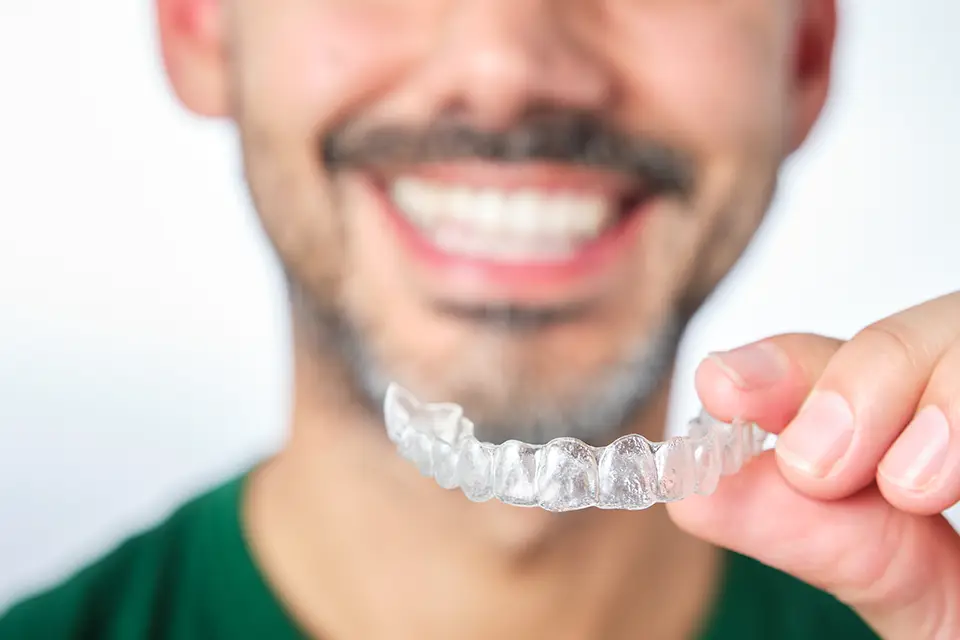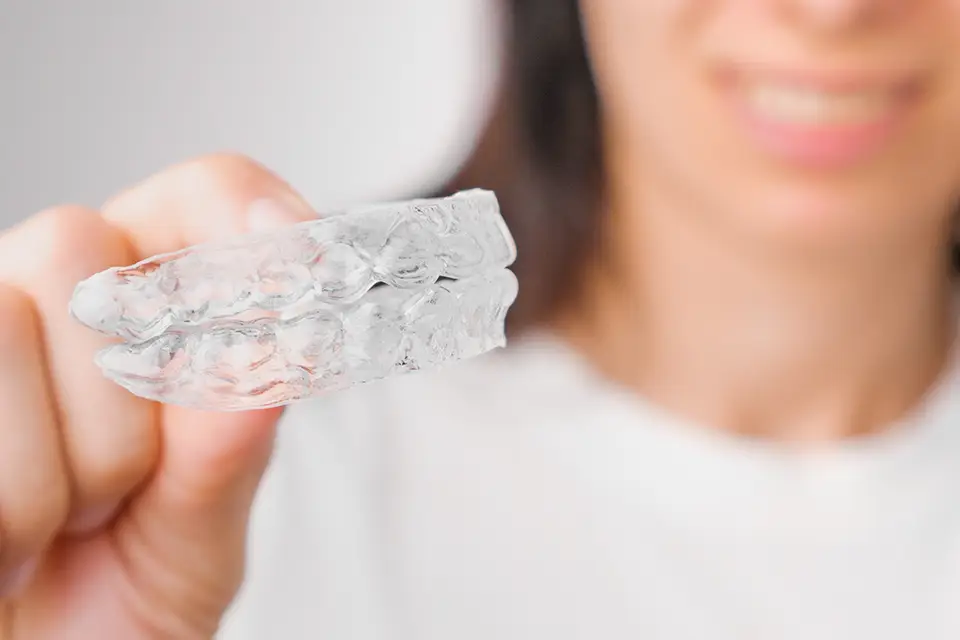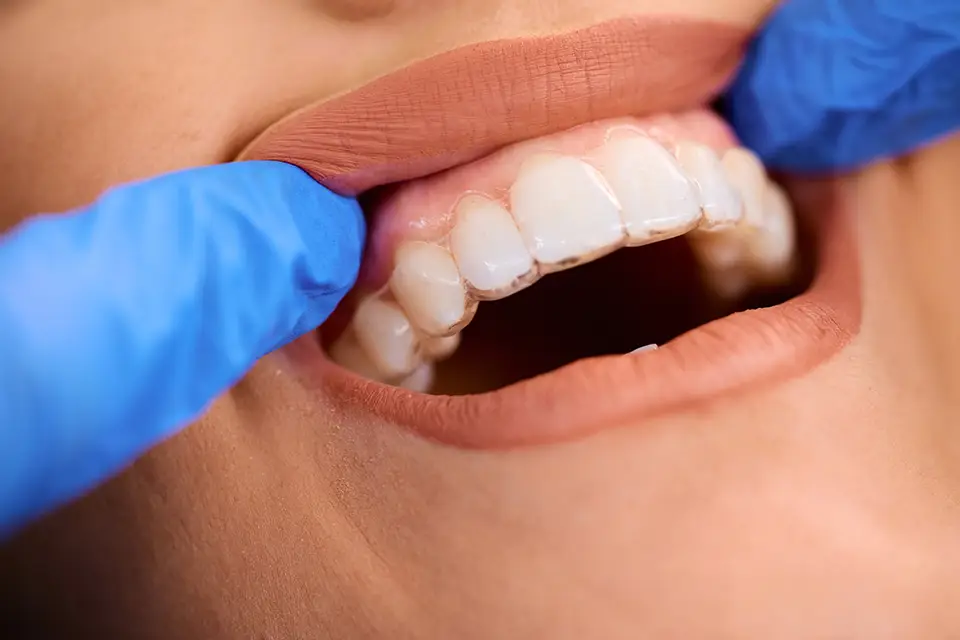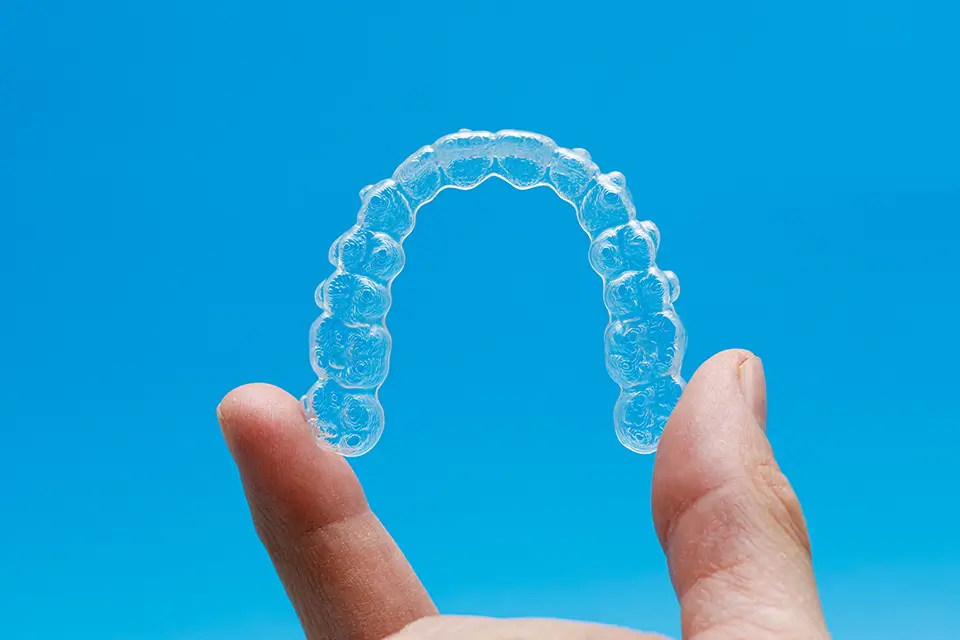The first few days with a new tray can be surprising: steady pressure, tender gums, a tooth that feels “bruised,” or slight jaw fatigue by evening. If you’ve caught yourself asking, “Why does my Invisalign hurt?”, you’re not alone. At Sunshine Dentistry in Richmond Hill, Ontario, we hear this often during the early phase of clear aligner therapy. Most discomfort is expected, short-lived, and manageable with simple steps. Understanding the “why” behind that pressure—and knowing how to calm it—turns “Why does my Invisalign hurt?” into a checklist you can act on.
Day 1–3: Why Does My Invisalign Hurt? Normal Pressure vs. Red Flags
Mild soreness usually peaks in the first 48 hours of a new set. That pressure signals teeth responding to planned movement—measured fractions of a millimeter per tray. Normal includes tenderness when biting, edges of attachments rubbing slightly, or gums feeling fuller. If you’re still thinking, “Why does my Invisalign hurt??”, use this early window to build good habits: seat trays fully, chewies for 5–10 minutes, and steady wear time.
Red flags to call us about: sharp, localised pain that worsens after day three, sores that don’t improve with wax or edge smoothing, or trays that won’t fully seat despite chewies. We’ll evaluate fit and make targeted adjustments.
Fit and Seating: The Mechanical Answer to "Why Does My Invisalign Hurt??"
Aligners work when they hug teeth closely. If a tray is even slightly unseated, forces concentrate in the wrong spots, and tenderness escalates. After inserting, always confirm full seating at canine tips and molar edges. If you still ask, “Why does my Invisalign hurt?”, try:
- Chewies: 5–10 minutes after each tray change and after meals to reset fit.
- Warm-water rinse (not hot): briefly softens the tray for micro-flexibility when seating.
- Attachment check: a missing or worn attachment reduces control and can cause odd pressure; we’ll replace it promptly.
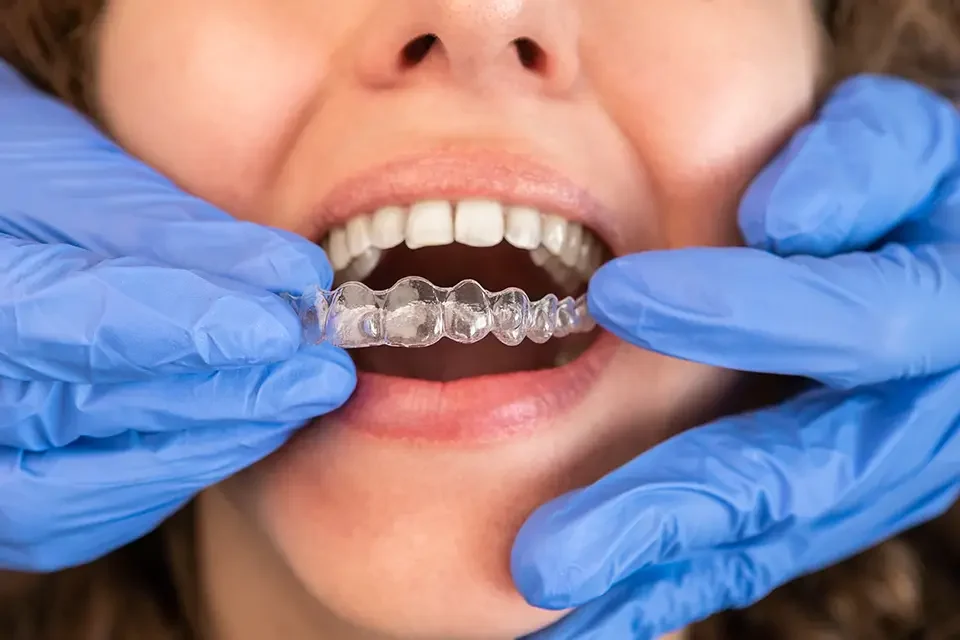
Biology Behind Movement: The Tissue Answer to "Why Does My Invisalign Hurt??"
Tooth movement isn’t just “pushing.” Aligners apply gentle forces that remodel the ligament around each root. That ligament is richly innervated—hence the tender feeling. The sensation peaks early, then settles as tissues adapt. If you’re wondering, “Why does my Invisalign hurt?” during midweek, remember: consistent 22-hour wear reduces repeated “first-day” biology that happens when trays are out too long.
Edges, Ulcers, and Attachments: Causes of "Why Does My Invisalign Hurt?"
Sometimes the culprit is local irritation rather than movement pressure:
- Tray edges: A slight overhang can rub the frenum or cheek. A quick, gentle buff at the clinic—or wax at home—solves most issues.
- Attachments: New bumps can feel rough for a day; wax during meals helps. Persistent snagging? We’ll smooth and repolish.
- Dry mouth: Meetings, flights, or coffee-heavy days reduce saliva. Sip water regularly—hydration softens friction and answers part of “Why does my Invisalign hurt?” in everyday life.
When Discomfort Isn't Typical: Patterns That Need a Review
If one tooth hurts in a sharp, persistent way, if a tray consistently rocks, or if you see blanching at the gumline, contact us. Sometimes, a tiny interproximal reduction (IPR), a revised trim line, or an earlier refinement set is the precise fix. The fastest path to solving “Why does my Invisalign hurt?” is a short, targeted appointment rather than “toughing it out.”
Relief Toolkit: Practical Ways to Calm Soreness
A few simple tools make a noticeable difference:
- Analgesics used correctly: Over-the-counter pain relief (as directed) for the first 24–48 hours of a new tray.
- Cold compress, 10 minutes on/off: Eases tissue soreness and jaw fatigue.
- Soft, cool foods on change day: Yogurt, eggs, smoothies by spoon.
- Nightguard-style thinking: If you clench at night, consider a tray change in the morning so daytime hours handle the peak pressure. That timing alone often reduces the sense of “Why does my Invisalign hurt?” overnight.
Daily Habits That Reduce the Need to Ask "Why Does My Invisalign Hurt??"
- Change trays at the same time each cycle. Predictability helps tissues adapt.
- Brush and floss before reinserting. Biofilm raises gum sensitivity.
- Avoid hot water on trays. Heat warps plastic and can alter fit.
Travel, Work, and Busy Weeks: Keeping Comfort on Track
If deadlines or travel are heavy, plan your tray change for a lighter day. Pack a spare set, chewies, a compact brush, and your case. A small rinse bottle helps in places without easy sink access. With those basics in your bag, you’ll ask “Why does my Invisalign hurt?” far less—consistency beats intensity.
Timelines: How Long Should Soreness Last?
Typical discomfort fades significantly after day two and often resolves by day four of each tray. If pain persists beyond that—especially if it’s sharp or one-sided—reach out. Prompt refinements keep progress smooth and make “Why does my Invisalign hurt?” a rare question rather than a weekly one.
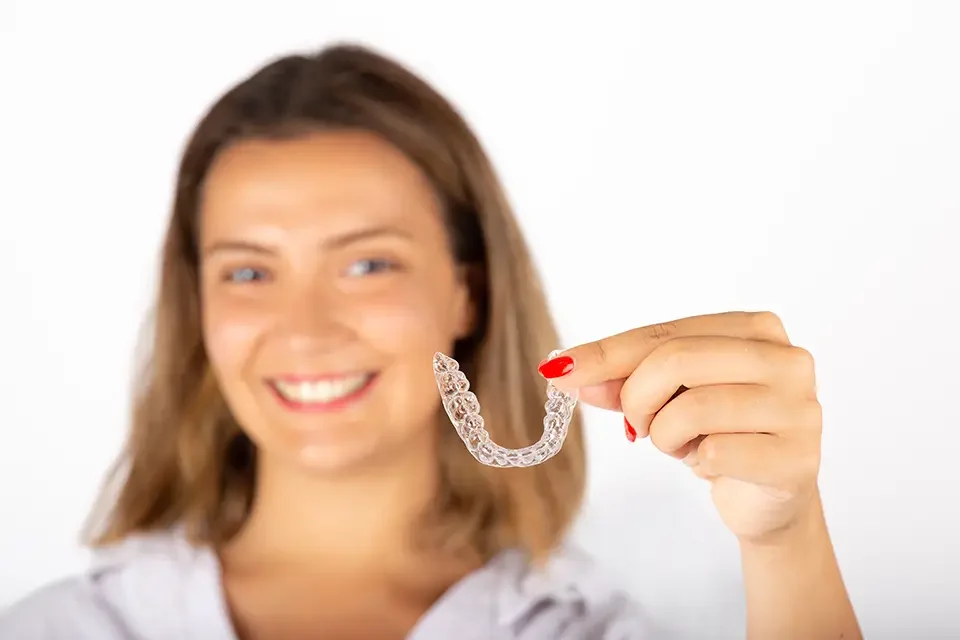
Costs and Appointments: The Practicalities Behind Comfort
Comfort visits are short and focused: edge smoothing, attachment checks, or minor IPR. They protect tracking—and your timeline. There’s real value in a 10-minute visit that prevents weeks of irritation, especially if “Why does my Invisalign hurt?” keeps returning for the same tooth.
Conclusion
Most aligner tenderness is predictable, short-lived, and manageable with a few steady habits. Plan your tray-change day, seat aligners fully, keep tissues hydrated, and don’t hesitate to book a quick comfort check if something feels off. The more precisely we address fit and biology, the less you’ll find yourself asking, “Why does my Invisalign hurt?” If you’re ready for clear, comfortable progress—and a plan tailored to your schedule—book a consultation at Sunshine Dentistry in Richmond Hill. We’ll map your movements, set realistic timelines, and give you a relief toolkit that works in real life.
FAQs — "Why Does My Invisalign Hurt??"
How much pain is normal with a new tray?
A firm ache or pressure for 24–72 hours is common. It should decline steadily. If you’re still asking, “Why does my Invisalign hurt?” after day four, let us assess fit and movement.
Are chewies necessary?
They’re not mandatory, but they improve seating and reduce hotspot pressure. Many patients notice less need to ask “Why does my Invisalign hurt?” when using chewies consistently.
Do I take aligners out for pain relief?
Keep them in. Removing trays prolongs the “first-day” feeling. If discomfort is stubborn, use approved analgesics and a cold compress, then call us for a quick fit check.
Can I file my trays at home?
Use orthodontic wax first. If an edge still rubs, we’ll smooth it professionally. Home filing can over-trim and affect retention—another path to “Why does my Invisalign hurt?” That’s easy to avoid.
Why does one tooth hurt more than the others?
It may be scheduled for a larger move, or the tray isn’t fully seated in that area. Chewies help; if the hotspot persists, we’ll adjust the plan so movement stays comfortable and controlled.
